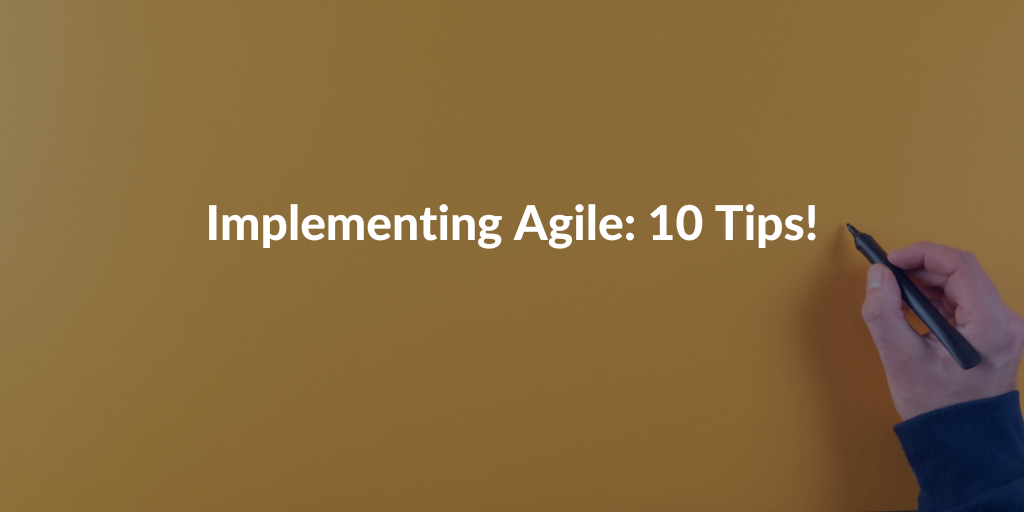Categories
Tags
Newsletter
Subscribe to the QRP International neswletter and get all the news on trends, useful contents and invitations to our upcoming events
Subscribe
The term Agile does not refer to a single methodology, but is a container term that brings together several frameworks. The frameworks are diverse and differ in their principles and techniques, among them we find, for example, Scrum and AgilePM.
The word Agile is generally associated with the concept of progress and momentum and is now so widespread that the ability to work Agile and having an Agile mindset are required of most professionals, however, the definition is not unambiguous:
In this article we will look at 10 techniques that can be implemented to adopt high-level Agile practices and techniques in one’s daily work. These techniques are simple on a conceptual level but require a great deal of emotional commitment because they imply changes in behaviour and work habits.
These practical tips will help with the first phases of implementing an Agile methodology or can be complementary to existing Agile techniques.
From the beginning to the end of an Agile initiative, we have to ask ourselves whether the experiment worked; if the answer is yes, we can work on these premises. If, on the other hand, the answer is negative, experiments are carried out until we arrive at the outcomes that work.
As with any experiment, it is necessary to identify criteria for success and failure before starting. To do this, one has to make a list of what can be considered positive and what must be considered negative, thus deciding on the criteria. A good way to identify criteria is to imagine positive and negative scenarios and how one should react to each of them.
“Being Agile” requires the development of a new focus: one must concentrate on new goals, not on new tasks. To do this, it is a good practice to start each day with an idea of the goal you want to achieve and how this succeeds in giving satisfaction to yourself, colleagues and customers.
To be able to imagine these results, use this checklist:
Use a short list to identify where it will be most useful to spend your time: this technique allows you to limit the ’emotional’ implications and focus on business value.
Ask as many people as possible the following questions:
These questions help to identify the most valuable work but, for double-checking, it is always necessary to select priorities using two factors:
Providing a solution that is able to evolve and change over time is one of the biggest challenges of Agile methodologies, as interconnections prevent a linear journey from taking place. You always refer to external inputs to facilitate your work and at the same time you are asked to provide information and data to help other professionals.
Dividing the work into smaller, independent fragments helps to avoid stalling or risking being delayed because you do not have the necessary input to move on to the next steps.
To create an evolving solution, you need to be creative and have new ideas to rely on. A quick way to get a new perspective is to ask yourself: “how would the items I am working on be used by different people, or how would they be used in different situations?”
To apply Agile, one must remain motivated throughout the different iterations of change. One must remember all that has been achieved, not what is still missing.
To succeed in this, it is necessary:
There is a rule that helps to divide the work while maintaining order:
DRAFT > UPDATE > FINAL VERSION
Time is needed to:
Ask specific questions that can help you in the development of the new version and at the same time, when giving feedback, answer the same questions:
With so many small goals forming the solution, it is a risk to get lost in all the things that are being created. It is important to regularly check that there is still time to reach the final goal and not just the ‘small wins’.
To do this, you need to have a macro-vision: think about the destination and the bigger picture you are working towards. Describe how your work is contributing to this, if there is no correlation it is probably because you are going off course!
Agile requires flexibility and innovation, which in turn require new sources of information and new perspectives. To enhance creativity and increase the network to have more choice on who to collaborate with, is recommended:
Invest in your Agile skills using the techniques learnt in the study of frameworks.
Embracing, adopting and improving these Agile behaviours, attitudes and habits will help professionals cope with all the changes that are affecting organisations, their pace and workload.
Original article published in 2021 and reproduced with kind permission of APMG International. Translated and edited by QRP International in 2024.
QRP International organises courses in Scrum and AgilePM. If you like to learn more or have any questions, please feel free to write to us!